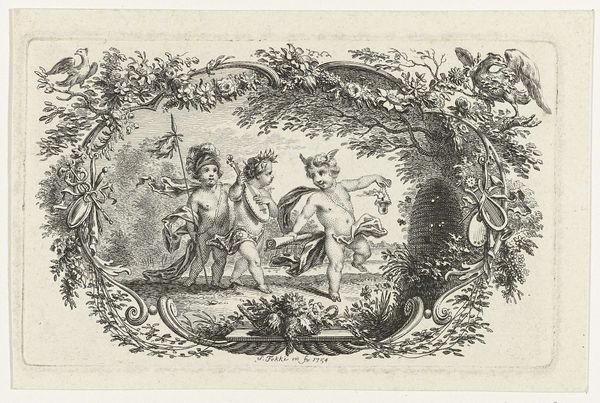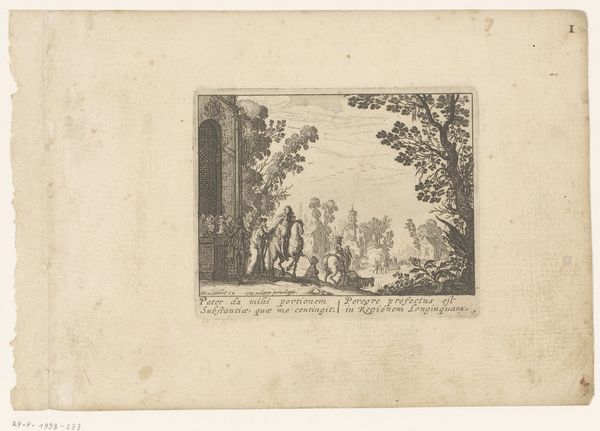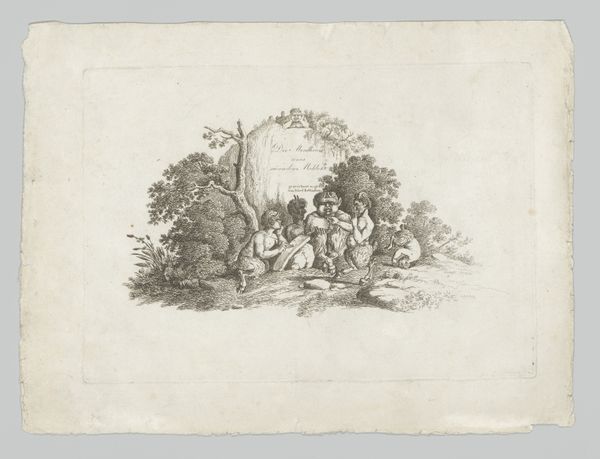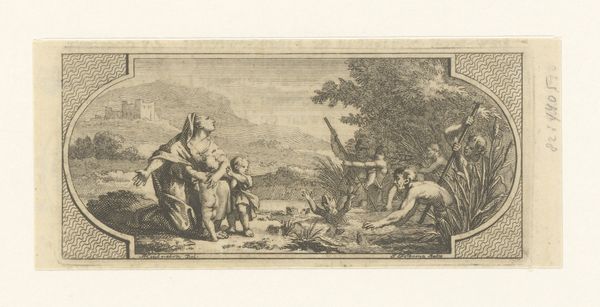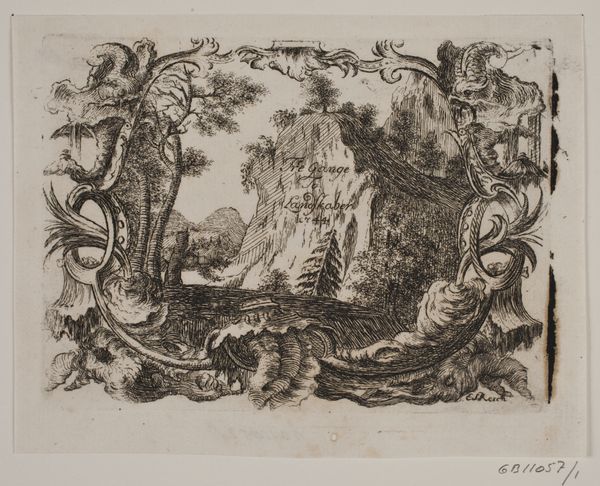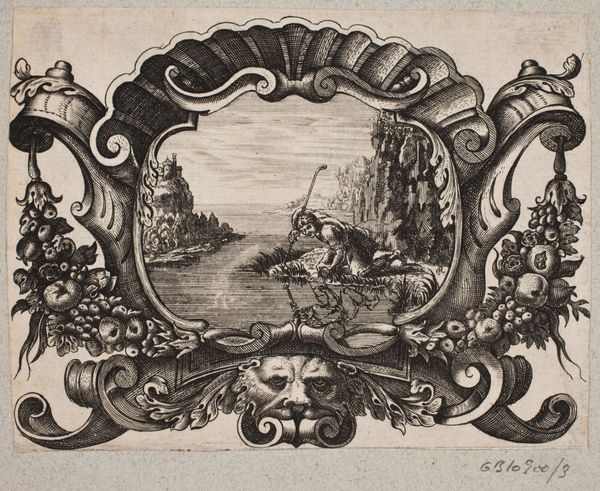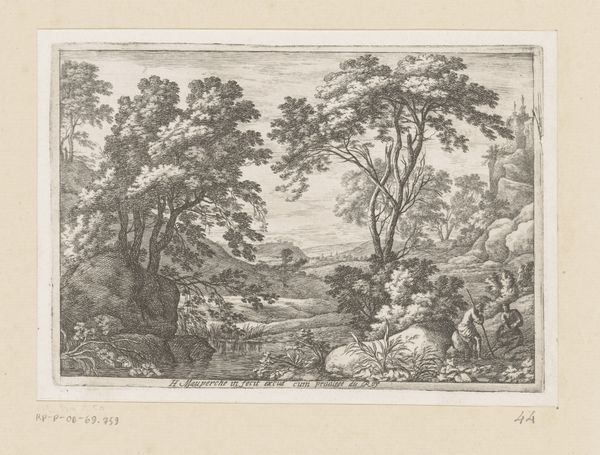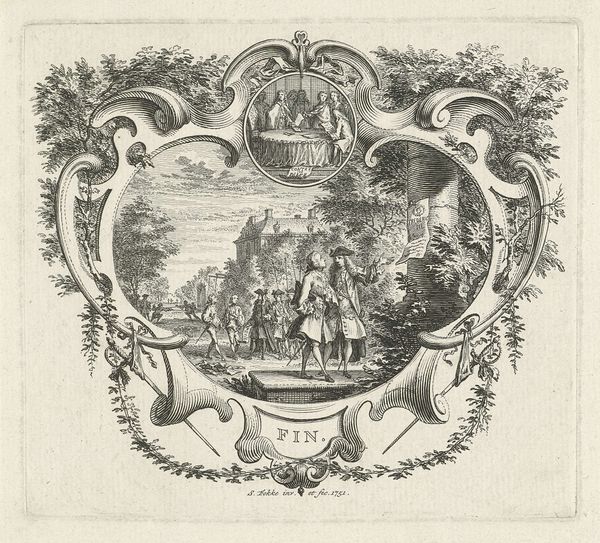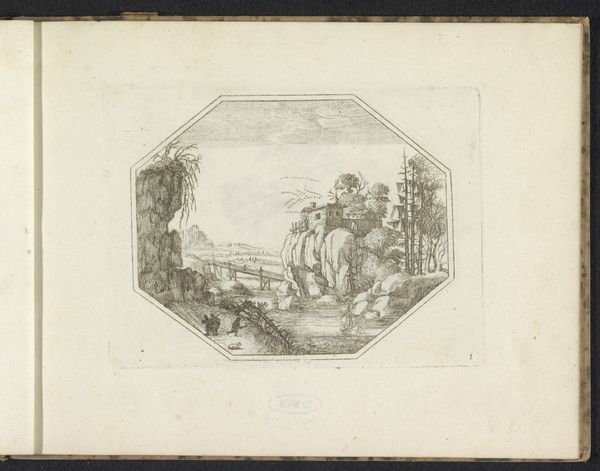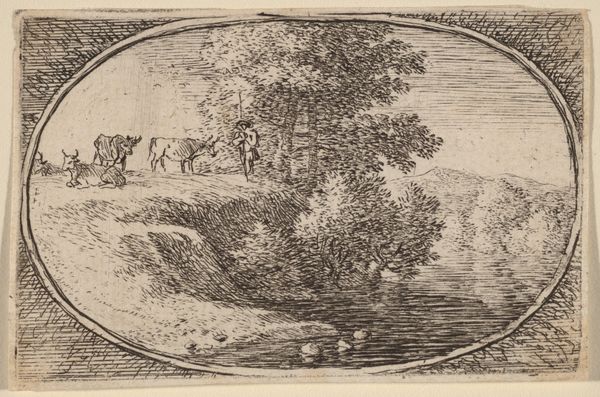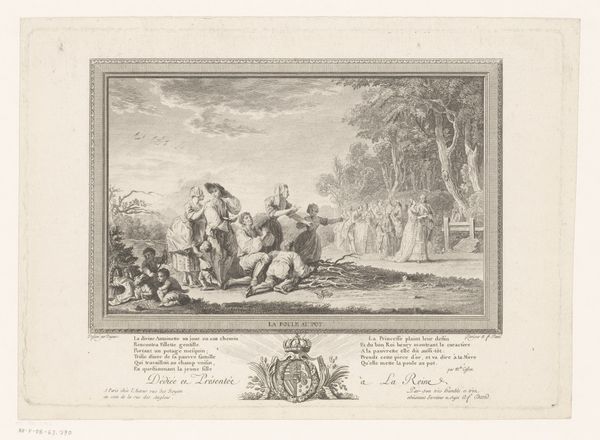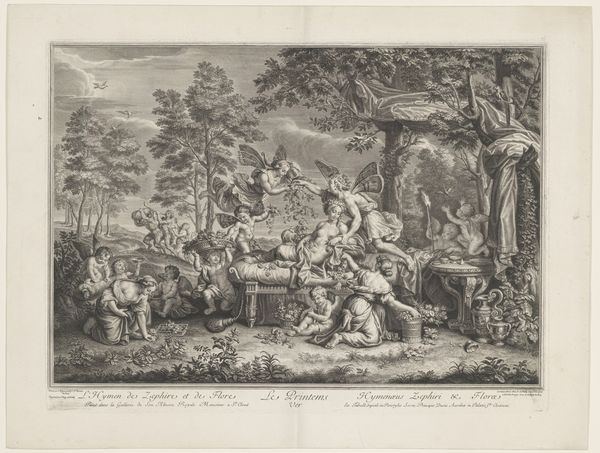
Dimensions: height 83 mm, width 156 mm
Copyright: Rijks Museum: Open Domain
Editor: This is "Oriental Landscape" by Noach van der Meer the Younger, dating from around 1751 to 1822. It's an engraving, so a print. I’m struck by how artificial the scene seems, a staged exoticism. What jumps out to you? Curator: Well, consider the materials: paper, ink, and the copper plate used for the engraving. The artist's labor becomes immediately apparent. This print wouldn't exist without skilled craftsmanship, the engraver meticulously translating an imagined scene onto the metal, impacting the possibilities of art for all. It’s a commercial object meant for distribution, inviting scrutiny into the colonial gaze shaping its production. How do you think that distribution influences its meaning? Editor: I guess it makes it a commodity. It's no longer a unique artwork but a product reflecting European fantasies. Did people viewing this engraving question how that image was manufactured? Curator: Exactly. Its materiality reminds us of that market of images and ideas and how such markets have the potential to be critiqued by those who use them, impacting culture at large. Each impression becomes a carrier of those colonial power dynamics. Notice the stylistic choices reinforcing this "Oriental" aesthetic? Consider how the artist utilized linear techniques and their social origins in printmaking. Editor: Yes, the frame even, it's all so ornate. Now that you point it out, I see that even the aesthetic decisions feel linked to its role as a consumable object and disseminator of a certain perspective. Curator: Precisely. It prompts us to analyze the relationship between art, labor, and the broader network of exchange in 18th-century society. Seeing it that way helps, right? Editor: Absolutely! I'd been too focused on the content of the image. Examining the process reveals a completely new layer. Curator: I agree. Examining the production exposes those power relations materialized in ink and paper, a key factor in the evolution of global economics and aesthetics.
Comments
No comments
Be the first to comment and join the conversation on the ultimate creative platform.
